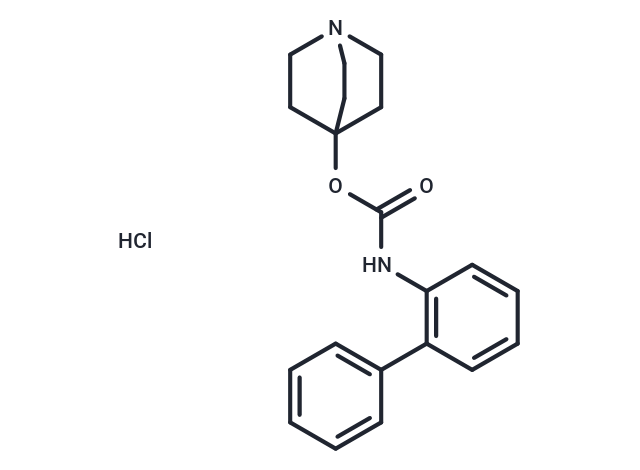Shopping Cart
- Remove All
 Your shopping cart is currently empty
Your shopping cart is currently empty

YM-46303 is a selective and potent muscarinic receptor antagonist that exhibits high affinity for the M3 receptor.YM-46303 can be used to study bradycardia in medullary rats.

| Pack Size | Price | Availability | Quantity |
|---|---|---|---|
| 1 mg | $700 | In Stock | |
| 5 mg | $1,800 | In Stock |
| Description | YM-46303 is a selective and potent muscarinic receptor antagonist that exhibits high affinity for the M3 receptor.YM-46303 can be used to study bradycardia in medullary rats. |
| In vivo | YM-46303, when compared to oxybutynin, exhibits approximately ten times higher inhibitory activity on bladder pressure in reflexly-evoked rhythmic contraction, along with about a 5-fold greater selectivity for urinary bladder contraction over salivary secretion in rats. Evaluation of antimuscarinic effects on bradycardia and pressor responses in pithed rats, as well as on tremor in mice, reveals that YM-46303 could be valuable for treating urinary urge incontinence. It functions as a bladder-selective M3 antagonist with potent activities and fewer side effects[1]. In vivo, YM-46303 demonstrates selective inhibitory activities on bladder pressure in reflexly-evoked rhythmic contraction against oxotremorine-induced salivary secretion. Additionally, it shows potent activity in a guinea pig model of methacholine-induced bronchospasm upon intravenous administration[1]. |
| Molecular Weight | 358.86 |
| Formula | C20H23ClN2O2 |
| Cas No. | 171722-81-9 |
| Smiles | Cl.O=C(OC12CCN(CC1)CC2)NC=3C=CC=CC3C=4C=CC=CC4 |
| Relative Density. | 1.31g/cm3 |
| Storage | store at low temperature | Powder: -20°C for 3 years | In solvent: -80°C for 1 year | Shipping with blue ice. |

Copyright © 2015-2025 TargetMol Chemicals Inc. All Rights Reserved.